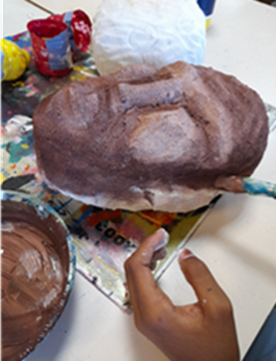3 How to use the different tools
3.2 Historical Episodes and Short Movies
 3.2.3 Use in lessons
3.2.3 Use in lessons
In this section you will find a description of the individual stages.
Stage 1: Collection of Sources for the Historical Episode
Select an appropriate episode from the Learning from History Toolkit. First introduce the historical period to the pupils so that they can get into the right frame of mind. They should know the circumstances of the protagonists and the historical contexts and developments that are relevant for understanding the episode. If the pupils are old enough, you can let them explore this themselves using sources (texts, pictures, videos, etc.).
Stage 2: In-depth Analysis of the Historical Episode
Pupils process the episodes (milestones) in order to have different people describe the situation from their own point of view, so that different perspectives of the situation are created. In addition to the historical figures who are involved and whose view of the event is more or less historically recorded, pupils also consider the perspective of ordinary people—either real or imaginary—whose perspective should be described in the same way as the ruling class' perspective.
The living conditions of the actors should be presented in an understandable way and integrated into the historical context (society, technology, economy, politics, religion, environment, culture). The sources and educational materials should be simple and comprehensible and as vivid as possible, as the next stage will involve the pupils taking on the roles of the various actors.
Stage 3: Script Development for the Short Movie
Pupils need to come up with an idea that is short, specific and important to the main characters. And although all characters are equally important in the historical episode, the short movie script should focus on one character as the main character. Knowing what the main character wants in the story is the most important shortcut to understanding and revealing who the main character is. The storyline will evolve around a need/desire for something that is deeply meaningful to him/her. The story then flows from the character's efforts to fulfill his/her need, the decisions and choices he/she makes, and their consequences.
Stage 4: Puppets Making

|
Figure 3: Fleury-Payeur, C (2022). Puppets making, emphazing volumes with color. |
Pupils build their puppets and the set for their short movie. It should be borne in mind that for the short movies created in the pilots of the project there was funding and a professional studio available. However, this does not mean that these are prerequisites for making a good movie. It is important to explain to the pupils that the puppets and sets do not have to be perfect and look professional. With a vehicle for imagination, any minor imperfections disappear. It is the acting that gives the puppet soul, not the excellence of the construction or the materials used.
Stage 5: Shooting the Short Movie

|
Figure 4: Linde, S. (2022). During the shooting of the film. [Photograph]. Graz. IgelTV. |
As mentioned above, the filming of the project pilots' movies took place in a professional studio with the constant guidance and support of relevant professionals. Pupils who would like to create their own movie can use any filming medium available from a smart phone to a professional camera that a member of the school community may have or even a professional studio that may be available in their town.